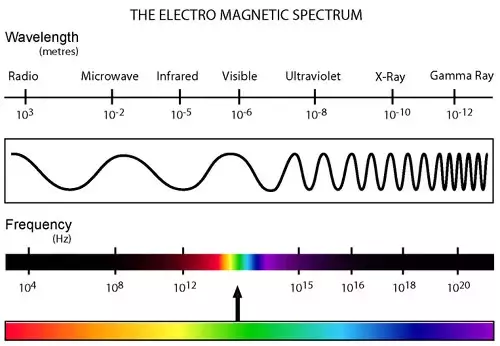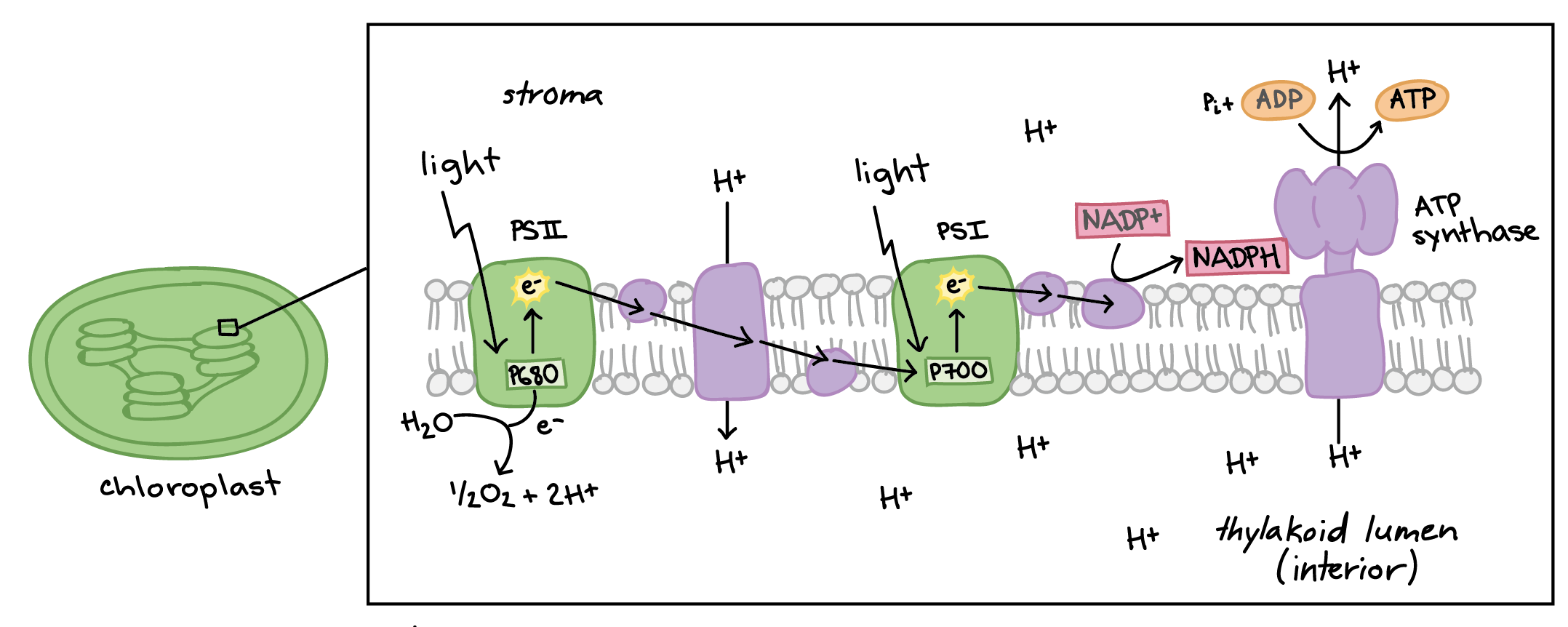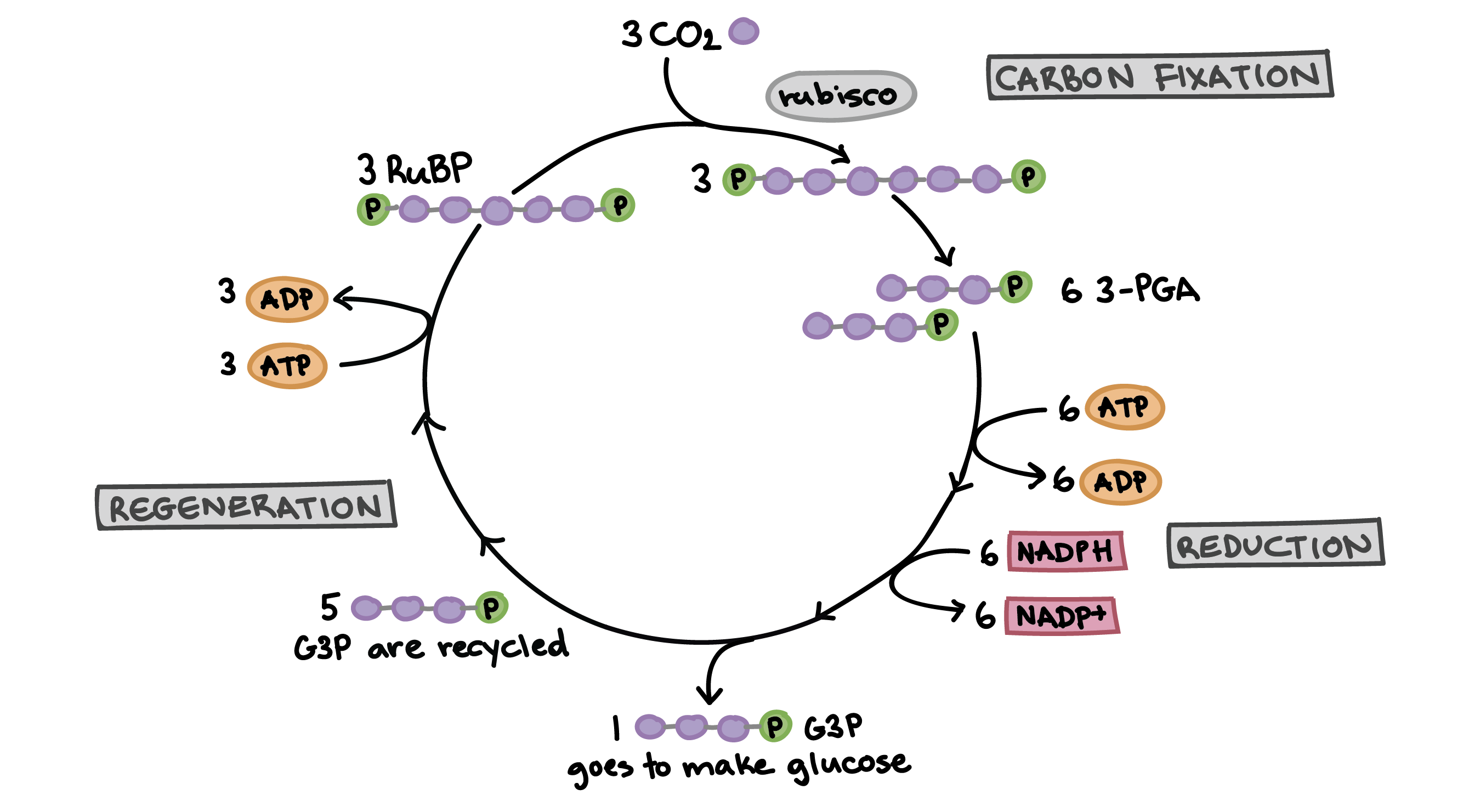Unit 7
Photosynthesis: the process of light energy being converted into chemical energy
Two stages of photosynthesis
Light reactions: light energy is absorbed by pigments and converted into two forms of chemical energy
ATP & NADPH
Calvin Cycle: ATP and NADPH drive synthesis of carbohydrates
7.1 Overview of Photosynthesis
Photosynthesis is carried out by certain plants, bacteria, and algae
General equation of photosynthesis
6CO2 + 2H2O + Light Energy = C6H12O6 + 6 O2
Energy from the sun drives photosynthesis
Photosynthesis powers biosphere
Organisms organized into two categories
Autotrophs: organisms that make their own food
Photoautotrophs: organisms that use light energy to produce food
Heterotrophs: organisms that consume food to live
Photosynthesis occurs in chloroplast
Chloroplasts contain a pigment called Chlorophyll
Mesophyll are tissues in plants that contain cells with chloroplasts
CO2 and O2 enter and exit via stomata
Chloroplast have three membranes
Inner and Outer membrane
Thylakoid Membrane: contains pigment molecules, forms structures called thylakoid
Stroma is fluid filled region between thylakoid and inner membrane
Photosynthesis stages
Light dependent stages: occurs in the thylakoid membrane
Light independent stage (Calvin Cycle): occurs in the stroma
ATP and NADPH are energy intermediates that provide the needed energy and electrons to make carbohydrates during Calvin cycle
7.2 Reactions
Light energy is transferred to a pigment in a photosynthetic organism
Light energy is a form of electromagnetic radiation
Electromagnetic radiation travels as waves
wavelength: the distance between peaks in a wave pattern
electromagnetic spectrum: encompasses all possible wavelengths of electromagnetic spectrum
Light has properties of particles
Photons

Pigments absorb light energy
Three things can happen when light touches an object
Light passes through the object
Object may change the path of light
Object may absorb the light
Pigment: a molecule that absorbs light energy
Light energy absorbed by pigments can boost an electron to a higher energy level
called excited state
this is an unstable condition, releases energy in different ways
can release hear
release energy in the form of light
can transfer extra energy to an electron nearby
this is called resonance energy transfer
Certain photosynthetic pigments can transfer the excited electron to another molecule
Plants contain different types of Pigments
Chlorophyll
Two types of pigments (Chlorophyll a & Chlorophyll b)
Reflects green light
Bound to thylakoid membrane
Carotenoids
Another pigment
Reflects red, yellows, and oranges
Absorption Spectra: graph that plots a pigment’s light absorption as a function of the light’s wavelength
Photosystems II and I
Thylakoid membranes contain two distinct complexes of protein and pigment molecules
PSII and PSI
PSII is initial step in photosynthesis
light excites electrons in pigment molecules located in PSII’s light harvesting complex
Energy is transferred to P680, which passes excited electron to electron carriers
As this happens, water is oxidized to replace the removed electrons
this creates O2
Through the Electron Transport Chain, the electrons pass through two complexes
This maintains the H+ gradient across the thylakoid membrane
Reaches PSI
Main role is to synthesize NADPH
Electron is removed from P700 and passed to another electron carrier (Ferredoxin)
Fd carries electrons to NADP+ Reductase
Electrons are bonded to NADP+, creating NADPH
Phosphorylation: process of ATP synthesis in Chloroplasts
ATP is created when H+ move through ATP synthase due to gradient created by the electrons moving through the ETC
H+ electrochemical gradient is created in three ways
Oxidization of water, which places H+ in thylakoid lumen
Movement of electrons through ETC pumps H+ into thylakoid lumen
Formation of NADPH uses H+ from the stroma

PSI produces only ATP via cyclic electron flow
Linear Electron Flow: mechanism that harvests light energy
electron flow is linear, produces ATP and NADPH in roughly equal amounts
Cyclic Photophosphorylation: pattern of electron flow that produces only ATP
7.3 Molecular features of photosystems
Electrons vary in energy level
Process is documented in Z Model
electron proceeds through a series of energy changes during photosynthesis
These events involve increases & decreases in energy of an electron
Electrons in a non-excited pigment molecule has the lowest energy
While in PSII, electron gets higher energy level
As electron travels from PSII to PSI, electron loses energy
Input of energy from PSI boosts electron energy level higher than PSII
Energy is released as electron is transferred to NADP+ reductase
7.4 Synthesizing Carbohydrates via Calvin Cycle
Takes CO2 and incorporates it into carbohydrates
Steps of Calvin Cycle
Carbon Fixation: CO2 is incorporated into RuBp which is then catalyzed by Rubisco
Reduction and Carbohydrate Production: ATP and NADPH converts product from carbon fixation into G3P, which will make glucose
Regeneration of RuBP: regenerates the RuBP

7.5 Variations of Photosynthesis
Temperature, water availability, and light intensity alters the way the Calvin cycle operates
Photorespiration
When CO2 is low and O2 levels are high, Rubisco will add O2 to RuBP
this is called Photorespiration and it is bad for plants
CAM Plants
CAM plants can minimize photorespiration due to their unique leaf anatomy
They work best in warm & arid climates as they can close their stomata to conserve water
